RECENT ARTICLES
What Caused Eta Carinae's 1840 "Great Eruption?"
Skip to contentIn 1840 an unassuming star in the Southern Hemisphere brightened suddenly. What had been a 5th magnitude star became so bright by 1843 that it was the second brightest star in the sky. The star, known as Eta Carinae, had been known to vary in brightness before, but this change was so sudden and so dramatic that it became known as the Great Eruption.The strange thing about the event is that it appeared similar to a supernova, but the star was not destroyed. After 1843 the star faded and has had small variations in brightness ever since. It’s currently a 4th magnitude star. So...…Skip to contentIn 1840 an unassuming star in the Southern Hemisphere brightened suddenly. What had been a 5th magnitude star became so bright by 1843 that it was the second brightest star in the sky. The star, known as Eta Carinae, had been known to vary in brightness before, but this change was so sudden and so dramatic that it became known as the Great Eruption.The strange thing about the event is that it appeared similar to a supernova, but the star was not destroyed. After 1843 the star faded and has had small variations in brightness ever since. It’s currently a 4th magnitude star. So...WW…

Wormholes Could Allow Travel Across the Universe, as Long as Your Spacecraft is Microscopic
In my I talked about the idea of warp drive and whether it might one day be possible. Today I’ll talk about another faster-than-light trick:Wormholes are an old idea in general relativity. It’s based on work by Albert Einstein and Nathan Rosen, who tried to figure out how elementary particles might behave in curved spacetime. Their idea treated particle-antiparticle pairs as two ends of a spacetime tube. This Einstein-Rosen Bridge would look like a black hole on one end, and an anti-black hole, or on the other end.The particle physics idea never panned out, but work inspired other...…In my I talked about the idea of warp drive and whether it might one day be possible. Today I’ll talk about another faster-than-light trick:Wormholes are an old idea in general relativity. It’s based on work by Albert Einstein and Nathan Rosen, who tried to figure out how elementary particles might behave in curved spacetime. Their idea treated particle-antiparticle pairs as two ends of a spacetime tube. This Einstein-Rosen Bridge would look like a black hole on one end, and an anti-black hole, or on the other end.The particle physics idea never panned out, but work inspired other...WW…
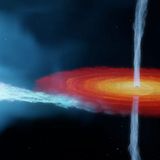
Cygnus X-1 was the First Black Hole Ever Found. New Measurements Show it's Much More Massive Than Previously Believed
In 1964 two Aerobee suborbital rockets were launched with the goal of mapping x-ray sources in the sky. Each rocket contained a directed Geiger counter, so that as the rocket rotated at the peak of its trajectory to measure the direction of x-ray sources. The project discovered eight x-ray sources, including a particularly bright one in the constellation Cygnus. It became known as Cygnus X-1.As x-ray telescopes became more precise, it was clear that Cygnus X-1 wasn’t connected to a bright optical source. The x-rays were quite bright and came from a region almost starlike in size. This...…In 1964 two Aerobee suborbital rockets were launched with the goal of mapping x-ray sources in the sky. Each rocket contained a directed Geiger counter, so that as the rocket rotated at the peak of its trajectory to measure the direction of x-ray sources. The project discovered eight x-ray sources, including a particularly bright one in the constellation Cygnus. It became known as Cygnus X-1.As x-ray telescopes became more precise, it was clear that Cygnus X-1 wasn’t connected to a bright optical source. The x-rays were quite bright and came from a region almost starlike in size. This...WW…
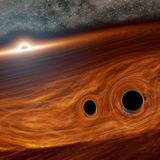
Astronomers see a Hint of the Gravitational Wave Background to the Universe
Gravitational-wave astronomy is still in its infancy. LIGO and other observatories have opened a new window on the universe, but their gravitational view of the cosmos is limited. To widen our view, we have the North American Nanohertz Observatory for Gravitational Waves (NANOGrav).Gravitational waves are created by the motion of massive objects. Most of the gravitational waves we’ve detected come from the merger of black holes. In their last moments, binary black holes orbit each other very quickly, producing rapid and strong gravitational waves. But most of the gravitational waves...…Gravitational-wave astronomy is still in its infancy. LIGO and other observatories have opened a new window on the universe, but their gravitational view of the cosmos is limited. To widen our view, we have the North American Nanohertz Observatory for Gravitational Waves (NANOGrav).Gravitational waves are created by the motion of massive objects. Most of the gravitational waves we’ve detected come from the merger of black holes. In their last moments, binary black holes orbit each other very quickly, producing rapid and strong gravitational waves. But most of the gravitational waves...WW…

Next Generation Gravitational Wave Detectors Should be Able to see the Primordial Waves From the Big Bang
Gravitational-wave astronomy is still in its youth. Because of this, the gravitational waves we can observe come from powerful cataclysmic events. Black holes consuming each other in a violent chirp of spacetime, or neutron stars colliding in a tremendous explosion. Soon we might be able to observe the gravitational waves of supernovae, or supermassive black holes merging billions of light-years away. But underneath the cacophony is a very different gravitational wave. But if we can detect them, they will help us solve one of the deepest cosmological mysteries.They are known as primordial...…Gravitational-wave astronomy is still in its youth. Because of this, the gravitational waves we can observe come from powerful cataclysmic events. Black holes consuming each other in a violent chirp of spacetime, or neutron stars colliding in a tremendous explosion. Soon we might be able to observe the gravitational waves of supernovae, or supermassive black holes merging billions of light-years away. But underneath the cacophony is a very different gravitational wave. But if we can detect them, they will help us solve one of the deepest cosmological mysteries.They are known as primordial...WW…
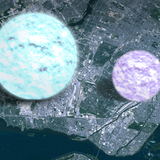
Is There a way to Detect Strange Quark Stars, Even Though They Look Almost Exactly Like White Dwarfs?
The world we see around us is built around quarks. They form the nuclei of the atoms and molecules that comprise us and our world. While there are regular matter contains only two: up quarks and down quarks. Protons contain two ups and a down, while neutrons contain two downs and an up. On Earth, the other four types are only seen when created in particle accelerators. But some of them could also appear naturally in dense objects such as neutron stars.The standard model for neutron stars holds that neutrons remain largely intact within their interior. Thus, a neutron star is like a huge...…The world we see around us is built around quarks. They form the nuclei of the atoms and molecules that comprise us and our world. While there are regular matter contains only two: up quarks and down quarks. Protons contain two ups and a down, while neutrons contain two downs and an up. On Earth, the other four types are only seen when created in particle accelerators. But some of them could also appear naturally in dense objects such as neutron stars.The standard model for neutron stars holds that neutrons remain largely intact within their interior. Thus, a neutron star is like a huge...WW…
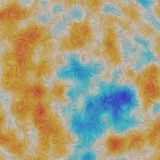
Polarized light from the cosmic background hints at new physics
The oldest light in the universe is that of the cosmic microwave background (CMB). This remnant glow from the big bang has traveled for more than 13 billion years. Along the way, it has picked up a few tales about the history and evolution of the cosmos. We just need to listen to what it has to say.One of the ways the CMB tells a story is through its polarization. If you think of light as an oscillating wave, then this wave motion can have different orientations, the orientation of a light wave’s oscillation is known as its polarization. Often, light is a random jumble of orientations,...…The oldest light in the universe is that of the cosmic microwave background (CMB). This remnant glow from the big bang has traveled for more than 13 billion years. Along the way, it has picked up a few tales about the history and evolution of the cosmos. We just need to listen to what it has to say.One of the ways the CMB tells a story is through its polarization. If you think of light as an oscillating wave, then this wave motion can have different orientations, the orientation of a light wave’s oscillation is known as its polarization. Often, light is a random jumble of orientations,...WW…
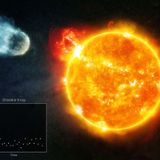
Even older red dwarf stars are pumping out a surprising amount of deadly radiation at their planets
Most of the potentially habitable exoplanets we’ve discovered orbit small red dwarf stars. Red dwarfs make up about 75% of the stars in our galaxy. Only about 7.5% of stars are g-type like our Sun. As we look for life on other worlds, red dwarfs would seem to be their most likely home. But red dwarfs pose a serious problem for habitable worlds.Red dwarfs are small and cool stars, so planets would need to orbit close to the star to be warm enough for life. This means the worlds are at greater risk from stellar activity. We’ve long known that red dwarfs can be quite active in their youth....…Most of the potentially habitable exoplanets we’ve discovered orbit small red dwarf stars. Red dwarfs make up about 75% of the stars in our galaxy. Only about 7.5% of stars are g-type like our Sun. As we look for life on other worlds, red dwarfs would seem to be their most likely home. But red dwarfs pose a serious problem for habitable worlds.Red dwarfs are small and cool stars, so planets would need to orbit close to the star to be warm enough for life. This means the worlds are at greater risk from stellar activity. We’ve long known that red dwarfs can be quite active in their youth....WW…
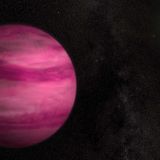
Planets are Finally Being Discovered Orbiting Farther From Their Stars
Discovering exoplanets is a difficult job. Given the challenges, it’s amazing that we’ve found any at all. But astronomers are clever, so there are currently more than 4,300 confirmed exoplanets. They range from small Mercury-sized worlds to planets larger than Jupiter, but most of them have one thing in common: they orbit close to their home star. This isn’t because most planets orbit close to their stars, but that our observations have a bias toward close-orbiting planets. The most common way to discover exoplanets is known as the This is where a planet passes in front of our view of a...…Discovering exoplanets is a difficult job. Given the challenges, it’s amazing that we’ve found any at all. But astronomers are clever, so there are currently more than 4,300 confirmed exoplanets. They range from small Mercury-sized worlds to planets larger than Jupiter, but most of them have one thing in common: they orbit close to their home star. This isn’t because most planets orbit close to their stars, but that our observations have a bias toward close-orbiting planets. The most common way to discover exoplanets is known as the This is where a planet passes in front of our view of a...WW…

New Data Supports the Modified Gravity Explanation for Dark Matter, Much to the Surprise of the Researchers
Dark matter is an extremely good theory. It’s supported by a wealth of observational and computational data, which is why it’s part of the standard model of cosmology. But dark matter hasn’t been directly observed, so sometimes even strong supporters of dark matter are motivated to look at the alternatives. The most popular alternative is known as Modified Newtonian Dynamics (MoND), also known as modified gravity. The evidence we have for dark matter assumes that our understanding of gravity is correct. Both Newtonian gravity and general relativity have been strongly confirmed by...…Dark matter is an extremely good theory. It’s supported by a wealth of observational and computational data, which is why it’s part of the standard model of cosmology. But dark matter hasn’t been directly observed, so sometimes even strong supporters of dark matter are motivated to look at the alternatives. The most popular alternative is known as Modified Newtonian Dynamics (MoND), also known as modified gravity. The evidence we have for dark matter assumes that our understanding of gravity is correct. Both Newtonian gravity and general relativity have been strongly confirmed by...WW…